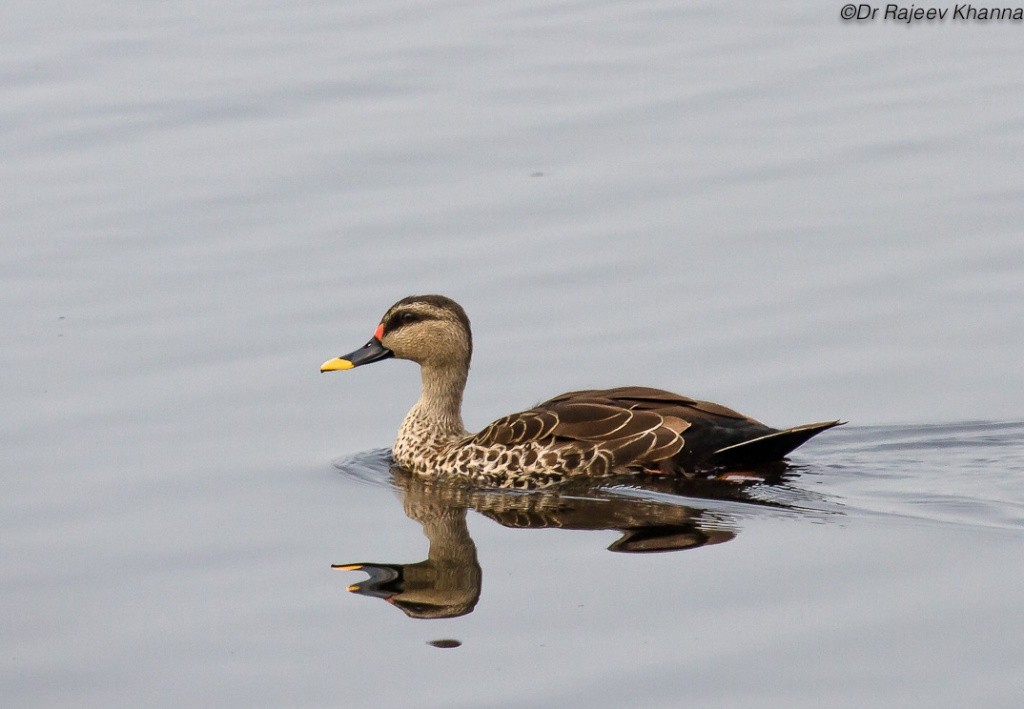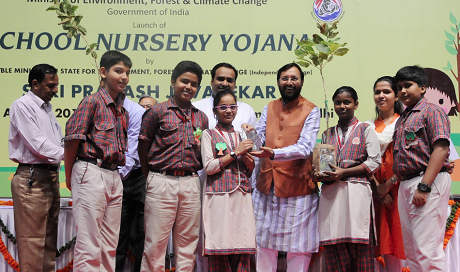IndiaWilds Newsletter Vol. 7 Issue VIII
Ecosensitive or Builder sensitive?
Thomas Hobbes in his 1651 book the Leviathan wrote “a government is formed more or less by everyone agreeing not to kill or rob each other under the penalty of law”. At times today, one gets the feeling that the Government has been reduced to such a lowest function.
The Government is supposed to be just and should stand to uphold what is good for the country and not for the good of a vocal majority. The Government is to look for the absolute good. However, most of the times, the Governments tend to look for the “greater common good” which is interpreted as something that benefits one major group of people. So it tends to create a project which it feels is good for more people and hence displaces the few from the project area. To assuage the feelings of the people who are wronged (read displaced), the Government comes out with compensation, which often remains inadequate. The more the Government tends to care for the “greater common good” visualised through a narrow prism, the more its acts appear unjust.
Our elected representatives and other politicians weigh issues based on the perceived vote banks and not whether something is right. In the process morality is tossed away. When one man committs a mistake, it is treated under due process of law. When many people together commit a crime, politicians and lobbies come together to petition and the Government then moves ahead to regularise the crime.
The recent ruling about the ecosensitive zone around Okhla bird sanctuary in Noida appears to be done using a similar logic.
The Okhla Bird Sanctuary was notified twenty five years ago in 1990 by the Uttar Pradesh Government as a protected area however no boudaries were demarcated. In 2005 the National Board of Wildlife became lenient and allowed site specific delineation of boundaries. In 2013 the National Green Tribunal had said that no construction activity will be permitted within the 10 km radius. Now the MoEF&CC has released the final ESZ (Eco-sensitive zone) notification which has reduced the ESZ boundary to 100 meters on the easter, western and southern side, down from the 10 kms. The ESZ on the northern side is 1.27km.
This move was to facilitate the regularisation of illegally constructed flats by various builders. There are an estimated 50,000 flats illegally constructed in that area. The northern side doesn’t have any construction as it is the flood plains, else, that too would have been reduced to 100 meters.

Birds in Okhla – Image Courtesy Dr. Rajeev Khanna
The Government has acted to save the builder lobby without any concern for the environment and wildlife. This move will set a negative precedent and Eco Sensitive Zones around the country will now redraw their boundaries. We have the toughest rules in the world. However, interpretations of those rules are ridiculous, often blatantly so due to ulterior motives.
However the Government on 24th August organised a press conference to defend itself and said that its move to declare the ESZ boundaries are justifiable. The Minister of State of MoEF&CC Shri Prakash Javadekar said that the purpose of declaring Eco Sensitive Zone is to create a buffer zone, where only regulated activities for specialized eco system will be allowed and this area will work as further ecological protection for Protected Areas (PAs). He said that the declaration of Eco Sensitive Zones will end confusion and bring clarity on the buffer zone.
Shri Javadekar said that the proposals forwarded by the State Governments were sent to Wildlife Institute of India for assessing extent of ESZ, Biodiversity and Wildlife Corridor value and the Geo-coordinates of prominent points on the Ecosystem zone boundary, list of prohibited/regulated activities in the ESZ. The recommendations of WII are examined in the Ministry by an Expert Committee before a final notification is issued and hence the ESZ notification is justifiable.

Spot Billed Duck at Okhla Bird Sanctuary Image Courtesy Dr. Rajeev Khanna
The Government and its panel of handpicked experts perhaps didn’t feel that the highrise apartments will have any impact on the birds. When people move in into the apartments, the place will be changed for ever. There would be bright lights and noise from loudspeakers, machines, vehicles which will cause a lot of stress to the birds. The temperature of the place would increase due to heat-island effect due to the houses and will be excacerbated when the airconditioners would start running. The glass panes will start reflecting more light and heat into the bird sanctuary, making it even more challenging for the birds.
Our implementation of rules are abysmal and in many cities througout India we find sewage and other garbage from the apartments dumped into the wetlands killing it slowly but surely. It won’t be surprising if Okhla will soon become like Bellandur lake in bangalore.
Unfortunately the data, if any, on the basis of which the decision to limit the ESZ at Okhla was limited to 100m on three sides is not in public domain. A few days ago, the National Green Tribunal while directing the MoEF&CC to issue the final notification had said that the final notification would also be subjected to judicial scrutiny.
The BJP Government had always talked about “Rama Rajya” and ensuring Governance which will take us to a situation where the modern day India will have as good a Governance as was said to be in the reign of Lord Rama. Unfortunately, one should also remind that Lord Rama in the Epic Ramayana, had even prosecuted his faithful brother Lakshmana. If the MoEF&CC cannot stop itself from pandering to the real estate lobby, then far from excelling in governance, the present regime would be known to have presided on the destruction of India’s natural heritage.
Our generation is doing a great disservice to future generations by succumbing to greed and destroying our last remaining wilderness areas.
Ban Polythene bags:
Plastics, especially the polythene bags choke the drains and this is one of the major reasons for waterlogging during the rainy season in cities like Delhi. Due to the near absence of any civic authorities the waste disposal system is in real mess. For unauthorised dumping of construction and other wastes in the drains and other areas, there is no one to monitor and levy fines. So every monsoon one finds waterlogging, resulting in the cities like Delhi and Bombay coming to a virtual standstill during monsoons.
There are very little green areas in and around the cities. So the cattle roaming around have to scavenge and eat the food items dumped by people. Invariably these cows consume the polythene wrappers, foils and bags and these things choke the intestines leading to painful deaths. Fortunately, some of the States are now showing concern for these deaths of cows and have moved in to ban polythene bags.
Chief Minister of Gujarat on Independence day declared “Keeping in view of environment, cattle health & cleanliness, have declared plastic ban across Gujarat”. “I was thinking of imposing a ban on use of plastic in Gujarat for four months. Nobody will be able to use plastic from now onwards. No shopkeeper in Gujarat will be able to use plastic,” she said. So hopefully before the end of 2015, the ban would be enforced in Gujarat.
The CM of Gujarat said “I had spoken on the issue of plastic with many people and now I have reached a firm decision to ban the plastic because this is the only way to save our cattle,”. “Whenever I visited cattle health-care camps, I found that doctors perform surgery on cows and remove plastic from their bodies… in some cases more than 10 kgs. The cows consume the plastic thrown by us,” she said.
“We opt for cow milk and ghee, then why shouldn’t we take steps to stop using the plastic and take a pledge that we will not throw plastic outside?” the Chief Minister asked.
A number of State Governments have already banned polythene carrybags that are less than 50 microns. However, the efficacy of the ban is laughable. Delhi too had banned polythene bags however one can freely find those. The Maharashtra Environment Minister Mr. Ramdas Kadam has also announced the ban in Maharashtra and said that the Govt. of Maharashtra would hand out strict punishments to ensure compliance. For manufacture and sale of polythene bags less than 50 microns, a penalty of between 1 to 5 lakh rupees and a prison sentence of upto 5 years will be slapped on the erring individuals and firms.
The polythene bags along with wrappers and packaging of fast food materials create havoc in our wilderness areas. Many wild herbivores are known to die a painful death after consuming these polythene bags and wafers packets. An elephant was known to die in Sabrimala after swallowing the discarded food wrapped in aluminium foils and polythene bags. One elephant in Mudumalai wa lucky enough to discard the polythene bag through its excreta, though I found blood in it. Hopefully it would have survivied.

Undigested polythene in the Elephant dung at Segur Road
In the Gujarat coast one dolphin was found to have died due to its intestines choking because of polythene bags. Since we don’t often come across the carcass of marine animals and also since we are not equipped to do post mortem of such large marine mammals, we don’t know the impact of plastics in the marine ecosystem.
Apart from the ban on polythene bags that are less than 50 microns, one has to also consider the deleterious impact of plastics on our environment. Every year billions plastic bags, bottles, wrappers, boxes made of plastic go into landfills. Due to the plastics in the municipal wastes, the municipal authorities face a challenge in incinerating it as burning plastics releases a chemical called dioxin which is carcinogenic. It also causes birth defects.
There are also lot of prescription drugs, mostly expired, that are thrown into the garbage and it goes into landfills. The chemicals from these drugs leach into the ground and pollute the ground water. The municipal authorities can filter the water before supplying it to the people, however, they don’t have means to neutralise the chemicals. The Government and municipal authorities have more or less remained aloof about the tremendous impact on the health due to such causes. Unless the people are conscious and start segregating bio-degradable and non-biodegradable items in the households and an efficient take back system is created based on the “polluter pays” principle, we will continue to face the ill effects.
According to Shri Prakash Javadekar, Minister of State for MoEF&CC, “80 per cent of the sewage does not get treated and one-third of the industrial pollution goes into water bodies… This year, we have done three things – more Sewage Treatment Plants and new technology, new rules of waste management – Solid Waste, E-waste, Plastic Waste, Hazardous Waste, Bio-medical waste and construction waste, all rules have been changed and new technology has been brought in and the base has been widened”. Though this statement was made by the minister on the 68th Independence day to justify the Swachh Bharat Campaign, the enormity of the problem demands a highly intense and sustained campaign, else it will take a long time if not prove impossible.
This ban on polythene bags is triggered due to the religious feelings associated with the cow and not due to environmental protection rooted in science, a point that should be noted by all the conservationists and wildlife lovers. Elected representatives of people and other politicians are more prone to take up issues with religious connotations to please their constituents rather than issues raised based on their scientific merits.
In 2007 efforts were made by WWF to protect the gangetic dolphins by involving the sadhus and other hindu religious leaders and that had resulted in some media coverage. In 2009 dolphins were declared as the National Aquatic Animal. It is another matter that precious little has been done by the MoEF to protect the habitat of the dolphins as our rivers are increasingly dying due to sand mining, dam construction and pollution.
Successive Governments at the centre had talked about saving the Ganga as it is one of the most sacred rivers and is deep rooted in our psyche. It is another matter that the present Government led by Shri Narendra Modi had told the Supreme Court that it will take 18 years to clean the river Ganga.
With the BJP Government coming to power in the centre as well as in Maharashtra, there have been several demands linked with Hindu rituals. Though some of those demands like allowing people to enter protected areas to perform Naga Panchami negatively impact the health of protected species, it may be prudent to use the religious angle for saving our protected species.
If plastics are being banned to protect the cow, will the Government also wake up to protect the sea cow? The dugongs or sea cows are in great danger due to the Sethusamudram project. This project apart from being environmentally destructive is also not financially viable. Hopefully the BJP Government at the centre will stop this project.
Elephant Poaching in Kerala
A poaching gang in Kerala is said to have killed 28 tuskers and have been recently apprehended by the forest department. It is reported that the mastermind behind this poaching operation, one Aikaramattom Vasu committed suicide.
After the notorious brigand Veerappan’s killing, the elephant poaching in South India was reported to have come down. However, any chance of this species bouncing back to health with ever shrinking habitat and increased man-elephant conflicts appears to be quickly vanishing because of such elephant poachers in operation. A former forest watcher by the name Kunjumon has confessed about this gang. Kalarikudiyil Kunjumon was hired as a cook and was witness to this horrific killing spree of this group. K. Kunjumon is said to have informed the forest department officials in Karimbali about these killings but they didn’t believe. He then went ahead and informed another forest camp at Edamalayar who acted upon his story. Upon detailed verification his story was found to be true.
It may be noted that the forest department has been interacting with the tribals in Vazhachal and Parambikulam and organising them into self-help groups for collecting honey and other NTFP and into eco-tourism etc, however, there have been no information about these elephant killings.
The gang reportedly killed elephants and the used to come back later to retrieve the tusks. This shows that despite the carcass rotting and being scavenged by other wildlife, the Kerala forest department never got clue that elephant poaching has been going on in Vazhachal, Parambikulam, Munnar as well as in the neighbouring Tamil Nadu and Karnataka.
56kg of ivory was seized from the kingpin Vasu’s sister. Vasu was later found dead in Maharashtra, with a suicide note by his side. With each kg of ivory being sold at more than a lakh of rupees, this elephant poaching racket would not be just the handiwork of a few people. Since the forest department was not aware, it can be safely assumed that some of them may also be complicit in the crime. Locals say that as usual powerful people are behind this and Vasu was sacrificed since he had too much to reveal. While investigations has been going on, it reveals the systemic deficiencies that continue to haunt our National Heritage Animal.
Declaring wild animals as vermin – MoEF’s solution for man-animal conflicts
Javadekar releases data for man-animal conflicts – outlines solution which includes eradicating wild animals
The Minister for MoEF&CC Shri Prakash Javadekar while answering in Rajya Sabha released data regarding animal populations and loss of life in man-animal conflict.
He said that the estimates of population of major wild animals indicate that there has been an increase in number of animals. The number of Asiatic lions has increased from 304 in 1995 to 523 in 2015, Tiger has increased from 1411 in 2006 to 2226 in 2014 and the Elephants from 25569 in 1993 to 29391-30711 in 2012.
Incidences of loss of human lives and damage to crops by wild animals are reported in various parts of the country from time to time. As such data of such incidents are not collated in the Ministry. However, the reports received from the States in National Tiger Conservation Authority and Project Elephant indicate the following data on human death due to Tiger and Elephant.

Surprisingly the minister said that there is no data for number of people who have lost their lives in man-elephant conflict. Recently the R. K. Srivastav, Inspector General of Forests had said that every year 500 people lose their lives in man-elephant conflicts. The Chattishgarh forest minister had said last month that 63 people were killed in Chattishgarh in Man-elephant conflicts last year. For more details check http://www.indiawilds.com/diary/indiawilds-newsletter-vol-7-issue-vii/

A wild asiatic elephant elephas maximus charging at a tourist bus that had come close to the herd in Bandipur Tiger Reserve. A few months back one elephant had fallen on a ditch in the same place and had died. It appeats that the elephants were more sensitive, and apprehensive at this place and hence their resentment of the tourist vehicle. The forest department had done controlled burning of the undergrowth.
Shri Javadekar said that degradation of the habitat including, depletion of water and food availability is considered some of the reasons for wild animals to come out of its natural habitat. Though this statement is true for the existing protected areas, a lot of wildlife also exist outside our protected areas. A lot of migratory corridors of elephants are outside the existing protected area network and the Elephant Task Force report had recommended that these areas be urgently secured by buying up those lands. Unfortunately, the Government has done precious little apart from branding the elephant as the National Heritage Animal.
Wildlife management primarily focuses on improvement of habitats of wild animals by augmenting the availability of food and water in forest areas to reduce the entry of animals from forests to habitations.
He further said that the Central Government provides financial assistance to State/Union Territory Governments under the Centrally Sponsored Schemes of ‘Integrated Development of Wildlife Habitats’, ‘Project Tiger’ and ’Project Elephant’, for augmenting their efforts for management of wildlife and their habitats.
The assistance is also provided to the States for payment of ex-gratia relief, management of wildlife conflict situations and construction/erection of physical barriers, such as barbed wire fence, solar powered electric fence, bio-fencing, boundary walls etc. wherever feasible. In many parts of the country, anti-depredation squads have also been set up to drive away problematic animals.
Keeping in view the losses to crops inflicted by the wild animals, this Ministry, on 24th December, 2014 issued an advisory to the States highlighting the legal provisions under the Wildlife (Protection) Act, 1972 to deal with the human-wildlife conflict situations. Vide this advisory, Ministry has also sought proposals from State/Union Territory Governments, after objective assessment of the situation with details of the areas in which notification under section 62 of the Act, declaring any wild animals as vermin for specified period, could be helpful in management of conflict. The same advisory has also been sent to the Chief Minister’s and Environment and Forest Minister’s of all the States/Union Territory Governments and also to all the Council of Minister’s in the Government of India. Despite vehement protests by conservationists, the MoEF&CC has continued to stick to its stand which reminds us of the British days.
Shri Javadekar further stated that his Ministry has also issued a detailed advisory on 1st June, 2015 to the State/Union Territory Governments regarding the priority actions for management of human wildlife conflict. The State/UT Governments have been requested to institute a ‘Human Wildlife Management Strategy’ along with other suggested measures for the proper management and prevention of human wildlife conflict situations.
Conservation News:
Ashwani Kumar panel rejects TSR Subramanian Report
The panel headed by Ashwani Kumar has rejected the TSR Subramanian report which had aimed to blatantly rewrite and weaken environment and wildlife laws. The TSR Subramanian report was seen as an attempt by the Government to ensure that industrialisation at any cost and would have resulted in decimation of India’s wilderness and wildlife.
The Parliamentary standing committee headed by Ashwani Kumar said “should the Government wish to consider specific areas of environmental policy afresh, it may consider appointing another committee by following established procedures and comprising of acclaimed experts in the field, who should be given enough time for comprehensive consultation with all stakeholders so that the recommendations are creditworthy and well considered, which is not the case with the recommendations under review”.
“Considering the various objections as aforesaid and comments of the Ministry, the committee finds that objections raised by members of civil society/ NGOs/ experts are prima facie valid and require serious reflection”.
Would result in unacceptable dilution of the existing legal and policy architecture established to protect our environment.
Air Pollution Hall of Shame
A WHO urban ambient air quality database from 2014 which tracks the ambient air quality of around 1600 cities from 91 countries has laid bare a shocking truth about the terrible quality of air in Indian cities. In this WHO database, India has got six cities in the world’s top ten most polluted cities list. Out of the top twenty most polluted cities list, 13 Indian cities find a place. And to top it all, this infamous list has been headed by Delhi with an annual average of 153 µg/m3 which is six times the maximum limit laid down by WHO.

Shri Javadekar, the minister of state (independent charge) for MoEF&CC has said that the Government is making consistent efforts to address the issue of air pollution in Delhi and National Capital Region (NCR) and is taking a consultative and cooperative approach to tackle the air pollution in and around Delhi. The Minister has taken three review meetings between April to July 2015 with the Environment Ministers of Rajasthan, Haryana, Delhi, Uttar Pradesh and with the concerned senior officers of municipal bodies and police from these States. Short-term prevention measures have been taken like stopping and burning of bio-wastes, initiating work for major up-gradation of Pollution Under Control (PUC) system, issuing challans of over-loaded goods vehicles, enhancing of parking slots availability, installation of waste to energy plants and strict monitoring of polluting industries.
Though these measures may appear to be a lot, however, it is not going to change the quality of the air in Delhi/NCR region. The Government has to first set right the public transport system. Till the time the public transport system is poor, inefficient, costly and limited in its reach, people will continue to use their own private transport. More air conditioned buses plying regularly throughout the NCR region will help people give up their personal transports.
The unabated construction of houses across the NCR region increases the level of dust in the air and well to do people are now installing air purifiers at home. Unfortunately, despite the real estate industry having some six years of inventory of unsold houses, greed continues to fuel the construction boom and air quality becomes the casualty.
The industries add their bit to increase the pollution levels as our pollution control boards have not done their duty of checking pollution.
The Government of India needs to undertake systemic changes, else the ambient air quality in Indian cities will continue to become worse with each passing day pushing millions into the clutches of disease, poverty and death.
Breathing Clean Air is our fundamental right. I hope the Government of India accepts “Right to Clean Air”. For further details check: http://www.indi
Students for trees – Gov’t Launches School Nursery Yojana
The Government has launched the School Nursery Yojana under which nurseries will be created in schools where students will be involved in raising the saplings.
The main objective of the School Nursery Yojana is to create an everlasting bond between the young students and plants and trees. The students will sow seeds, grow saplings in the school nursery, as a part of practical exercise for Biology classes and extra-curricular activities for students of other streams. The students will also carry out a tree census in their school and the locality.
A school Nursery will have a small space of a minimum of 100 sq meter for preparing beds for raising saplings and for nursery-related activities, including preparing, planting a mixture of good earth, soil and manure, filling earthen pots and storage of seeds. Each School Nursery is expected to create a 1,000 saplings every year. The schools will be encouraged to take up composting, rain water harvesting and water recycling to inculcate best practices in young minds. Through the School Nursery Yojana, the Ministry will support schools to provide all the essential facilities for raising of saplings for use of students and schools.
In an event to commemorate the launch of this programme, Shri Javadekar, Minister of State for MoEF&CC said that there can be no better combination than that of students and trees. Shri Javadekar said that the Yojana is being launched in 1,000 schools this year. ‘It will be expanded to cover around 5,000 schools next year and to about 10,000 schools in the third year’, he said.

School Nursery Yojana II
More than sixty participating schools received saplings of their choice from a wide range of species including medicinal plants. Some of the species of saplings distributed to the students include – ‘Neem’, ‘Jamun’, ‘Amaltas’, ‘Kachnar’, ‘Bahera’, ‘Amla’ and ‘Bigonia’. Some of the herbal plants that were distributed include – ‘Tulsi’, ‘Lemon Grass’, ‘Giloi’, ‘Ashwagandha’, ‘Haldi’ and ‘Ilaichi’. A packet of seeds too was given to students, which included species such as ‘Kachnar’, ‘Papdi’, ‘Kaner’, ‘Neem’ and ‘Bigonia’. Around 5,000 saplings were distributed to school students and some nearby residents.
Given the large number of students in each school, if each student were to plant a tree, then there won’t be space in the schools. Hence the Government should also allow planting of trees in revenue lands and allow people to water and tend to the saplings without any claims to the land. Each school can be earmarked a patch of land so that the students can then engage in the tree planting activities.
Students may also be taught to plant the flowering and medicinal plants in their terrace gardens.
This move will be good in generating awareness. However, we also have to move beyond the superficial level of knowledge of “tree planting is good” and need to explain the importance of planting indigenous tree species native to each locality. The students need to be explained that one can plant a tree but cannot create a forest. The intricate relationship between various species of trees needs to be explained.
Hopefully we can avoid the monoculture plantations that we see in many parts of the country.
Government of India establishes National Adaptation Fund on Climate Change
The Government of India has established the National Adaptation Fund on Climate Change (NAFCC) with a budget provision of Rs.350 crores for the year 2015-16 and 2016-17, with an estimated requirement of Rs.181.5 crores for financial year 2017-18.
The NAFCC will be meant for assistance to the States and Union Territories that are vulnerable to Climate Change and help them adapt. NABARD (National Bank for Agriculture and Rural Development) will be responsible for the implementation of the adaptation projects and has been appointed as the National Implementing Entity (NIE).
The focus of the fund is to assist adaptation projects and programmes to support concrete adaptation activities that reduce the effects of climate change facing communities and sectors. The templates for project preparation and guidelines for implementation of the project have been prepared. The guidelines have outlined the objective, priorities, eligible activities, approval process, implementation, monitoring and evaluation mechanism. Shri Prakash Javadekar, the Minister of State for MoEF&CC (Independent Charge) informed the Lok Sabha today that the needy States and Union Territories will be identified based on the State Action Plan on Climate Change (SAPCC) and the relevant missions under NAPCC (National Action Plan on Climate Change).
He further said that as of now, there is no provision for any external assistance to be credited to NAFCC. The scheme has been recommended and approved in the month of July, 2015. As such no financial support from NAFCC has been provided so far for adaptation activities under National Action Plan on Climate Change (NAPCC) and State Action Plan on Climate Change (SAPCC).
IndiaWilds App for Android Mobile
In India most of the internet penetration is happening through mobile phones. And the existing users who have access to desktops and laptops are becoming much more mobile then they used to be a few years ago. So to raise awareness and reach out to more people we need to adapt ourselves and make IndiaWilds easily accessed through a mobile phone using android OS.
Today, I am pleased to announce that we have created a mobile phone app so that people can access IndiaWilds anytime, anywhere without being tied to a computer. No need to type. One can access at the click of a button.
We have developed this app through Business Compass LLC a company based in Randolph, New Jersey, United States so that we create a good app.
Awareness is the first step before a person can become a champion of wildlife. I hope this will help us in reaching out to more people to raise awareness and make a real impact on the conservation landscape. If you have an android device then please download the app from this link:
https://play.google.com/store/apps/details?id=com.businesscompassllc.indiawilds
Equipment Discussions
Canon launches camera with 4,000,000 ISO (ISO 40 lakh priced at around 30 lakhs rupees)
Canon today announced the new ultra-high-sensitive ME20F-SH multi-purpose camera that can see in the dark. This camera will change wildlife filming forever.
The following are the salient features.
Resolution: Full HD
Mount: EF mount
ISO: 4,000,000 ie. 40 lakh ISO
Frame rate: 1080 60p, 25p
Sensor size: 35mm full frame CMOS
Minimum subject illumination: 0.0005 lux (Theoretical value based on the following shooting conditions: color, no light accumulation, f/1.2, 30P, 50 IRE)
Pixel size: 19 μm square (Canon 1D X has 6.94 μm pixel)
Output terminals: 3G/HD-SDI and HDMI terminals
Price: $30,000 us dollars or around Rs. 30 lakh
Dimensions: 4 inchx4.5 inchx4.4 inch
Weight: 1.1 kg
Availability: December 2015

Canon launches ME20F-SH camera with 4,000,000 ISO (ISO 40 lakh)
Nikon announces AF-S 200-500mm f5.6E ED VR lens
In an interesting development, Nikon has announced a AF-S Nikkor 200-500mm f5.6E ED VR lens.
This lens has a constant f5.6 aperture. It has longer range than the 200-400mm f4 lens. It is also cheaper as it is priced at $1396.95 usd.

Nikon 200-500 f5.6 E ED VR
This lens has got extra low dispersion glass so that chromatic aberrations and distortions are controlled, sharpness is increased along with increase in clarity and colour accuracy.
This lens has a Silent Wave Motor autofocus system for quick and silent autofocusing in stills as well as in video modes. One can override to autofocus manually. By turning the focus ring. According to Nikon, the VR mechanism in this lens can handle upto 4.5 stops and hence help a lot in handholding.
Spanning a long, versatile zoom range, the AF-S NIKKOR 200-500mm f/5.6E ED VR Lens from Nikon is a telephoto zoom characterized by a constant f/5.6 maximum aperture for consistent performance throughout the zoom range. The optical design incorporates extra-low dispersion glass to reduce chromatic aberrations and distortions for increased sharpness, clarity, and color accuracy.
A Silent Wave Motor AF system produces fast, near-silent focusing performance that suits both stills shooting and movie recording which can instantly be manually overridden by simply turning the manual focus ring. Further contributing to photographing in fast-paced situations and difficult lighting, VR (Vibration Reduction) image stabilization compensates for the effects of camera shake by up to 4.5 shutter speed stops. Additionally, an electromagnetic aperture mechanism is integrated into the lens design to provide greater exposure control stability that is especially beneficial when working with faster continuous shooting rates.
The Nikon 200-500mm f5.6 lens is designed for FX sensors and also can be used in cameras with DX sensors. The minimum focusing distance is 7.2 feet.
This lens takes 95mm filters in the front.
The Nikon AF-S Nikkor 200-500mm f5.6E ED VR lens will be available in September at an estimated cost of $1396.95 us dollars. At this price, I feel this lens is going to be a very popular lens and should help shooters move away from the third party lenses like the Sigmas and Tokinas. You can preorder this lens at B&H using the following link:
http://www.bhphotovideo.com/c/produc…990/KBID/13252
Natural History
COUNTRY NOTEBOOK: M. Krishnan: ‘The Leopard and his spots’ By Saktipada Panigrahi
http://www.indiawilds.com/forums/showthread.php?8852-Country-notebook-m-krishnan&p=76344#post76344
Sea Snakes and Fish Spines
http://www.indiawilds.com/forums/showthread.php?16780-Sea-Snakes-and-Fish-Spines
Territorial display and fight of Pheasant-tailed Jacana in breeding season
Sounds of Nature
Ponmudi Bush Frog by Abhishek Jamalabad
http://www.indiawilds.com/forums/showthread.php?16751-Ponmudi-Bush-Frog-(Raorchestes-ponmudi)
Orange Headed Ground Thrush by Prasad Dingankar
http://www.indiawilds.com/forums/showthread.php?16753-Orange-Headed-Ground-Thrush
Wildlife Photography
Symbiotic Relation by Sabyasachi Patra
http://www.indiawilds.com/forums/showthread.php?16727-Symbiotic-relation
The baby – Kabini elephants by Shyamala Kumar
http://www.indiawilds.com/forums/showthread.php?16725-The-Baby-and-the-Bathtub-Elephants-of-Kabini
Standing Tall by Bhargava Srivari
http://www.indiawilds.com/forums/showthread.php?16733-Standing-Tall
Skywalk Manas by Samrat Sarkar
http://www.indiawilds.com/forums/showthread.php?16703-Skywalk_Manas-National-Park
Jewel of Konkan by Prasad Dingankar
http://www.indiawilds.com/forums/showthread.php?16742-Jewel-of-Konkan
Bristled Grassbird by Nishith Kumar
http://www.indiawilds.com/forums/showthread.php?16695-Bristled-Grassbird-Another-angle
Red vented Bulbul (Juvenile) by Mangru Minz
http://www.indiawilds.com/forums/showthread.php?16741-Red-vented-Bulbul-(Juvenile)
Cuckooshrike in Ranathambore by Vipin Sharma
http://www.indiawilds.com/forums/showthread.php?16700-Ranthambore-diary-June-15
Sloth Bear Climbing for Honey by Sucheth Lingachar
http://www.indiawilds.com/forums/showthread.php?16688-Sloth-Bear-Climbing-for-Honey
Deep into Jungle by Jitendra Katre
http://www.indiawilds.com/forums/showthread.php?16728-Deep-into-jungle
Seshachar’s Bush Frog by Abhishek Jamalabad
http://www.indiawilds.com/forums/showthread.php?16697-Seshachar-s-Bush-Frog
Mating pair of Monkey puzzle by Prajwal Ullal
http://www.indiawilds.com/forums/showthread.php?16718-The-rare-Puzzle
Indian Rock Python by Dheerendra Singh
http://www.indiawilds.com/forums/showthread.php?16687-Indian-Rock-python(Python-molurs-Linnaeu)
I look forward to your inputs and support in preserving the last tracts of wilderness and wildlife left in our beautiful country. For other interesting articles and images check –http://www.indi
To post in the IndiaWilds forums, you can register free of cost using your Full Name as user id at
http://www.indiawilds.com/forums/register.php
If you are already a member of IndiaWilds and have forgotten your user id and/or password you can mail to
administrator@indiawilds.com
If you want to contribute original articles, or for any image enquiries please send a mail to
administrator@indiawilds.com
Regards,
Sabyasachi Patra
Profile:http://www.indiawilds.com/about.htm
Contact:http://www.indiawilds.com/contact_us.php
Facebook:http://www.facebook.com/pages/IndiaWilds/132629240481
Diary:http://www.indiawilds.com/diary/
Equipment reviews:http://www.indiawilds.com/diary/category/equipment/
Forums:http://www.indiawilds.com/forums/index.php
IndiaWilds Channel:http://www.youtube.com/indiawilds
Please post your views and feedback in the comments below.
- Canon Launches Cine Servo 11-55 mm T2.95-3.95 lens - 10 September,2025
- Water Monitor Lizard in Sundarbans - 14 May,2025
- Radio collared Tigress - 30 January,2025













Sad to read it. Builders always get a way in our country. And same is with industries. I don’t know when will we start taking nature seriously.
And could you please move the text in video a little up. When ad banners pop up, they cover it.